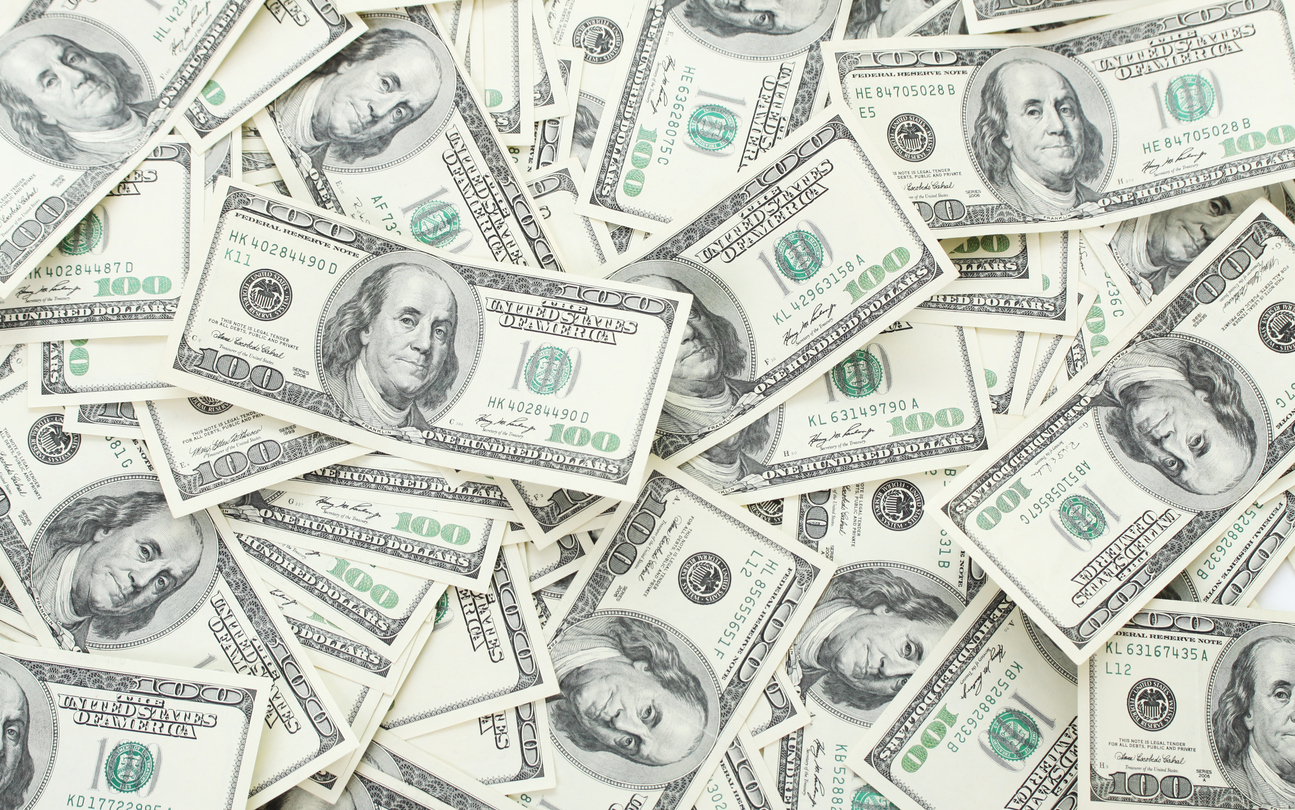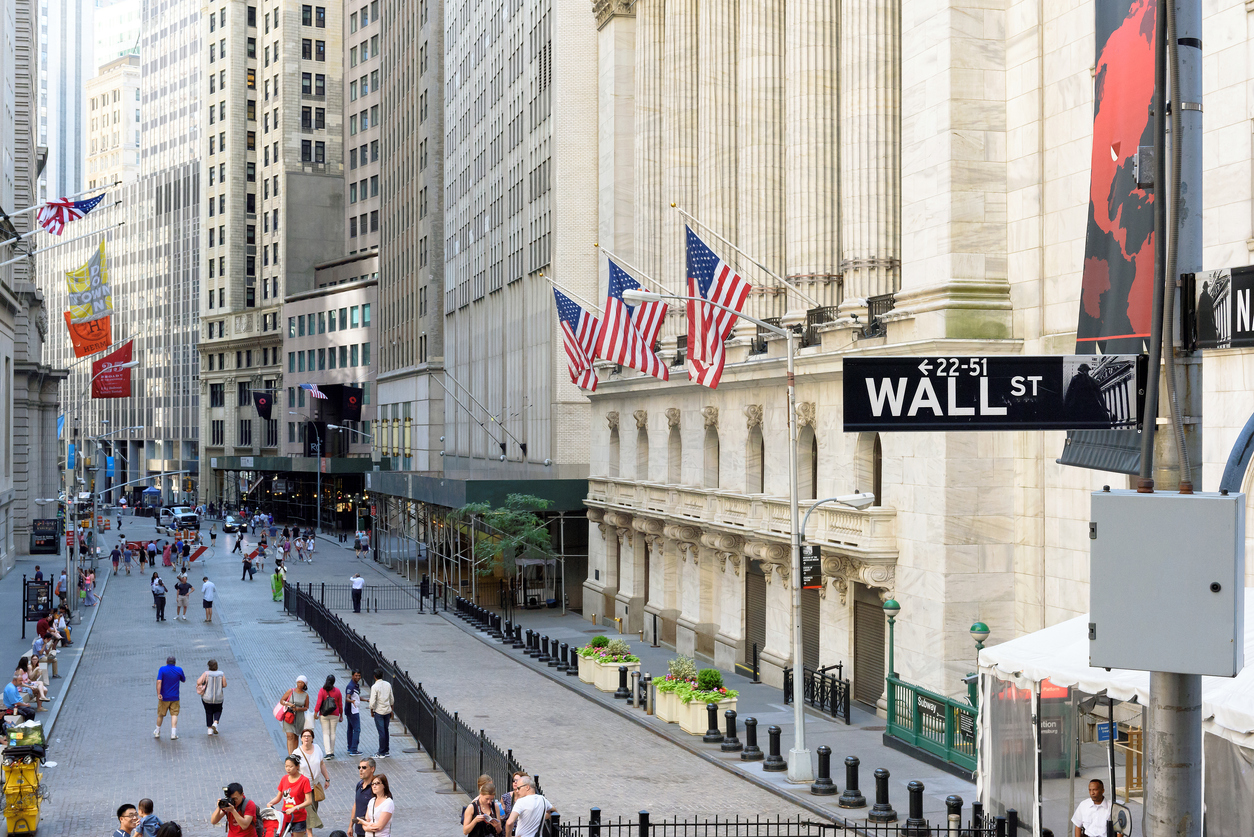Wall Street exploded with energy last Friday after New York Federal Reserve President John Williams dropped a bombshell hint at upcoming interest rate cuts. Investors, who had been on edge from recent market jitters, poured back in with renewed vigor. The Dow Jones Industrial Average rocketed more than 600 points, a solid 1.4% gain that wiped away doubts in a single afternoon. The S&P 500 followed suit with a 1.1% climb, while the Nasdaq edged up over 1%, fueled by a wave of optimism sweeping through trading floors.
This surge came just days after a shaky jobs report from the Bureau of Labor Statistics showed 119,000 new positions in September, beating expectations but signaling a cooling labor market. Markets had dipped sharply Thursday, erasing a 700-point Dow advance as fears grew that rate cuts might slip further away. Williams' timely words flipped the script, reigniting hopes for easier money and brighter economic days ahead.

Investor monitoring live stock market trends on a mobile device, highlighting the dynamic nature of this week’s earnings and economic data.
Why This Fed Signal Has Markets Buzzing
Williams spoke at a Central Bank of Chile conference, where he laid out a vision of policy easing. He described current monetary policy as "modestly restrictive" and added that he sees "room for a further adjustment in the near term to the target range for the federal funds rate." Those words landed like a spark on dry tinder, convincing traders that the Fed stands ready to act soon.
The backdrop feels electric right now, with inflation risks fading and job growth softening just enough to prompt action without tipping into recession. Lower rates would slash borrowing costs for companies, sparking more hiring, expansion, and profits that ripple straight to stock prices. For everyday folks glued to their 401(k) apps, this means potential windfalls in growth stocks that have dominated headlines all year.
Krishna Guha, head of global policy and central bank strategy at Evercore ISI, captured the thrill in her analysis. She pointed out the subtle power in Williams' phrasing, saying, "There is some ambiguity in the phrase 'near term' – but its most obvious reading is at the next meeting." Her take underscores the raw anticipation building among experts, a sentiment that echoes the relief washing over rattled portfolios.
Ripples for Your Everyday Money Moves
Lower interest rates promise a cascade of upsides for American wallets, starting with the stock market's infectious rally. Cheaper borrowing juices corporate earnings, lifting valuations on everything from tech darlings to blue-chip staples. If you hold shares in Adobe, which jumped 3.5%, or Intuit, soaring 6%, your retirement nest egg just got a hearty boost.
Beyond investments, consumers stand to gain big on loans that touch daily life. Mortgages could dip, unlocking refinancing dreams for homeowners locked into higher rates from last year's frenzy. Auto loans and personal credit lines might follow, freeing up hundreds in monthly payments for families stretching budgets thin. Even credit card balances, a silent drag on millions, could see relief as banks adjust prime rates downward.
According to analysis reviewed by Finance Monthly, this policy pivot aligns with a softening economy where unemployment hovers near historic lows, yet wage pressures ease. The emotional lift is palpable, turning what felt like an endless grind into a glimmer of breathing room for Main Street.
Yet balance tempers the joy, as savers watch high-yield accounts yield less. Bonds might underperform short-term, but for debt-laden households, the trade-off swings heavily positive. Friday's action spotlights how Fed whispers shape real lives, from grocery runs to dream vacations deferred.
Who's Riding High and Who's Holding Steady
The rally painted a vivid picture of sector winners basking in rate-cut glow. Tech leads with Adobe's 3.5% leap, Intuit's 6% sprint, and Apple's steady 1.8% rise. Consumer plays like Home Depot, up 3.9%, and Amazon, gaining 1%, signal spending power rebounding. Financials and health stocks joined the party too, American Express climbing 2.9% and Merck & Co. surging 4.7%.
Not every name danced perfectly, though. Palantir dipped 0.5%, Microsoft shed 0.9%, and Broadcom fell 1.3%, while Nvidia held flat amid AI hype cooling slightly. This mix reveals the nuanced drama of markets, where rate hopes lift most boats but leave a few rocking.

A pile of cash illustrates the stakes as Wall Street surges — potential Fed interest rate cuts could boost portfolios, savings, and overall household wealth.
Easing the Credit Card Crunch: Your Hidden Win from Rate Cuts
Imagine carrying a credit card balance that balloons monthly under sky-high interest, a burden shared by over 100 million Americans. The Federal Reserve's benchmark rate sets the tone for what banks charge on those cards, often adding a premium on top. When the Fed trims its key rate, as signals suggest for December, credit card APRs typically trail down, sometimes by a full percentage point or more within months.
This matters deeply because total U.S. credit card debt now tops $1.23 trillion, per the latest New York Fed data, with the average APR hovering at 24.04% for new offers. For a household with $6,000 in revolving debt, that's roughly $1,200 in annual interest alone, eating into holiday plans or emergency funds. A 0.25% Fed cut might shave that to $1,050, pocketing an extra $150 yearly, enough for a family dinner out or a small savings bump.
Experts like those at Evercore ISI see this as a targeted lifeline in a "soft landing" scenario, where growth hums without inflation's bite. It's not instant magic, banks lag Fed moves, but historical patterns show relief arrives by early next year. For consumers juggling post-pandemic bills, this angle transforms abstract policy into tangible ease, fostering confidence to spend or save without the dread of compounding costs. Think of it as the Fed handing back control, one lower payment at a time.
What Readers Are Wondering Next
Will the Fed Actually Cut Rates in December 2025?
Traders now peg the odds at 80% for a quarter-point slice in December, up sharply from under 40% last week, thanks to Williams' nudge and cooling jobs data. This shift reflects the Fed's delicate dance, balancing inflation under 3% with unemployment at 4.1%. For consumers, it spells cheaper loans soon, but watch November's meeting minutes for final clues that could lock in the move and steady your financial planning through year's end.
How Do Fed Rate Cuts Affect Mortgage Rates Right Now?
Mortgage rates, tied loosely to the 10-year Treasury yield, have already dipped below 6.5% in response to cut bets, down from peaks over 7% earlier this year. A confirmed Fed easing could push 30-year fixed rates toward 6%, saving buyers $200 monthly on a $400,000 home loan. Homeowners eyeing refis should monitor yields closely, as this window might spark a spring buying surge and ease housing affordability strains felt nationwide.
Should I Buy Stocks Now Before More Rate Cuts Hit?
With the S&P 500 up 1.1% on Friday's news and growth stocks leading, timing feels opportunistic for long-term holders. Yet volatility lingers, so diversify into broad index funds rather than chasing hot names like Nvidia. Historical data shows equities gain 10-15% in the year following initial cuts during soft landings, rewarding patience over panic buys amid this Fed-fueled optimism.















